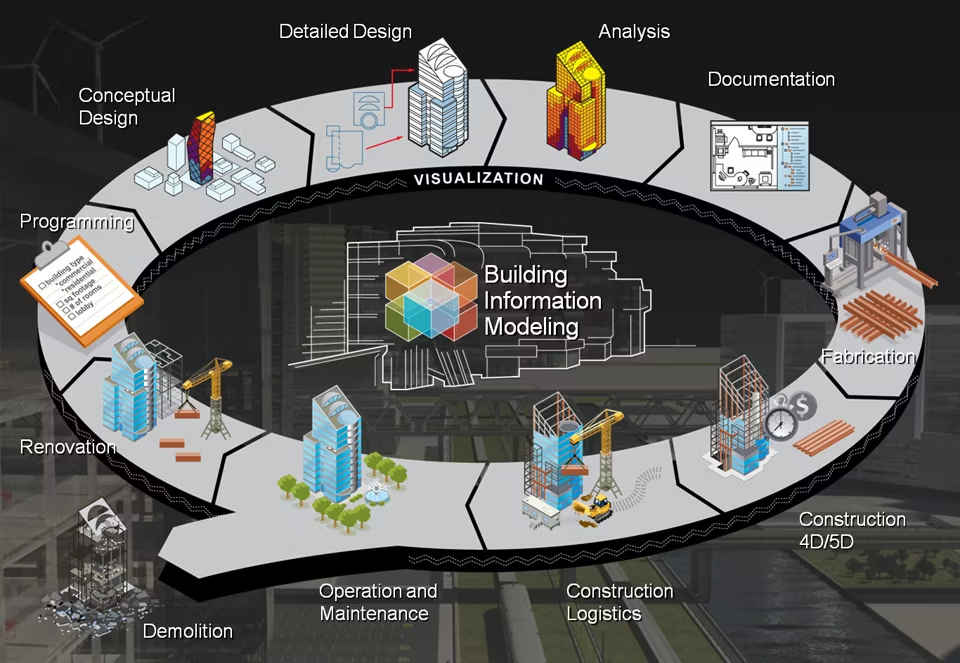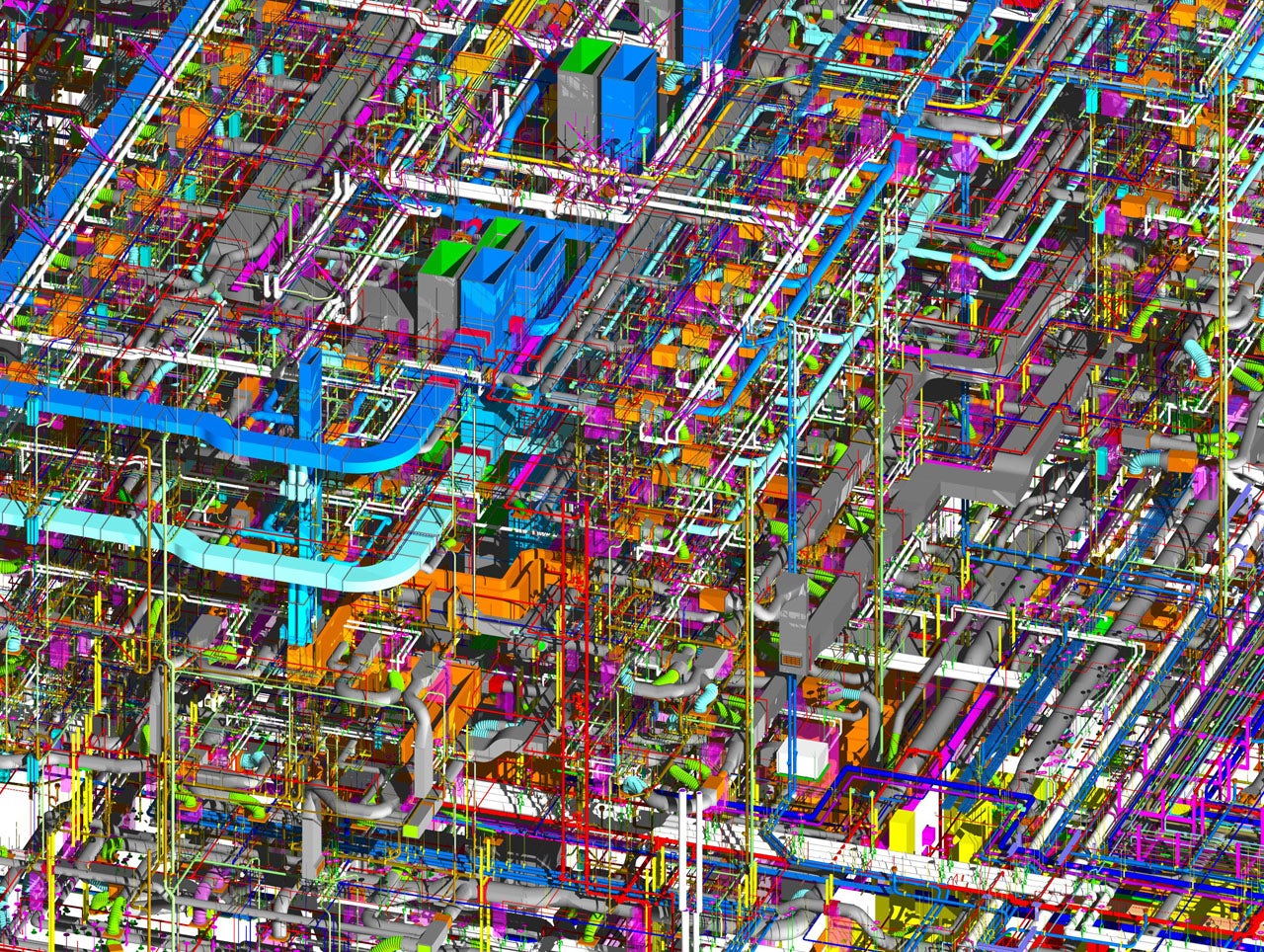VIATechnik specializes in technology for the architecture, engineering and construction industries and works with clients in the realm of virtual reality, BIM services and artificial intelligence. Architizer is glad to present a selection of the firm’s blog posts on all things AEC. Check out their website for more.
Thirty years ago, architects and engineers were still struggling to give up hand-drawn plans, even as it became abundantly clear that computers and AutoCAD would be the future of structural design. Today, a new design revolution is unfolding before our eyes: Building Information Modeling (BIM) is changing not only the way designs are generated, but our fundamental approach to construction in general. Here’s what you need to know.
More Than Just a Tech Product
By now, most people are familiar with the basic concept of 3-D modeling software, but because the technology is still relatively new, many fail to realize its full potential in construction applications. Using BIM to create 3-D virtualized renderings of an architectural design is, of course, a core capability; however, most are surprised when they learn what BIM’s real value is: a communication and information-sharing platform.

Revit screenshot; via Suite Projects and Investments
BIM isn’t a product itself; rather, it’s a family of solutions, meaning there are many different BIM developers with their own offerings, each with a unique set of pros and cons. That said, one thing that defines all BIM platforms is the blending of age-old design strategies with phenomenal new data and communication capabilities. The end result is a tool that is arguably more about overall project management than it is about design.
At its core, BIM is dedicated to systems-based thinking and connecting disparate parties in the construction process in innovative and intuitive ways. BIM facilitates coordination between building professionals at all stages of a project. It’s a platform on which architects, engineers, construction workers and project managers can share information, collaboratively identify problems and work out solutions. And because all this can be done for all aspects of a project, it’s introducing efficiencies that are changing entire industries.
A Highly Efficient Process
BIM has been aptly described as a multidimensional design, construction and building operations tool. In addition to 3-D rendering capabilities, BIM uses data sets to factor in time considerations (the “fourth dimension”), financial parameters (the “fifth dimension”) and asset management (the “sixth dimension”). BIM can also be used to account for important environmental considerations in architectural projects, such as light and air flow. Most impressive is the fact that all of these dimensions can be processed and analyzed in real time.

BIM is involved at every stage of a project, from concept to completion; via Buildipedia.com.
Contrast that concept with the linear execution model that construction projects have relied on for decades: First, an architect comes up with a 2-D drawing and a 3-D model of a building. The architect’s drawings are sent to a structural engineer whose job it is to come up with a structural design that will allow the architect’s model to stand. Then you have to factor MEP engineers into the equation who have to figure out how to incorporate all of the necessary mechanical, electrical and plumbing infrastructure into the design, as well. Keep in mind that in the past, all of these plans were drafted by hand, and when potential issues were identified, designs would have to bounce around between all of the stakeholders until resolved at every level.
Once the design stage is complete, a set of plans is sent to a construction crew. A project manager reviews the plans and creates a construction timetable and estimates project costs. Inevitably, as building gets underway, the construction team identifies problems with the engineered plans and has to halt the process, prompting yet another round of redesigns.
BIM not only streamlines the communication and redesign process, it mitigates risk in the initial design phase, reducing the likelihood that on-site problems will arise at all. Consequently, weeks or even months are often saved, resulting in shorter project timelines and increased ROI.

BIM helps make sense of increasingly complex structures and mechanical and electrical systems; via Buildipedia.com.
Collaboration Matters
Beyond simple inefficiency, another common problem with the traditional process outlined above was that constant miscommunications resulted in finger-pointing and disharmony. The engineer would fault the architect for creating a structurally unsound or unexecutable design; the construction crew would fault the engineer for not knowing how things worked in the “real world.” Meanwhile, everyone would fault the project manager for setting unrealistic timelines and cost goals.
BIM bolsters teamwork and increases transparency throughout a project’s lifespan, making each individual stakeholder in the process more accountable for their own tasks. Much of the time and energy spent identifying and fixing mistakes is spent instead on cross-team coordination and collaboration.
With so much value to bring to the table, it’s no surprise that many owners, municipalities and commercial real estate developers included are now insisting that BIM be used in the projects they commission. Construction’s growth and productivity rates have been stagnant for years now; if the industry wants to work toward a brighter future, embracing innovation and forward-thinking technologies clearly is the only path forward.
Architizer is building tech tools to help power your practice: Click here to sign up now. Are you a manufacturer looking to connect with architects? Click here.









